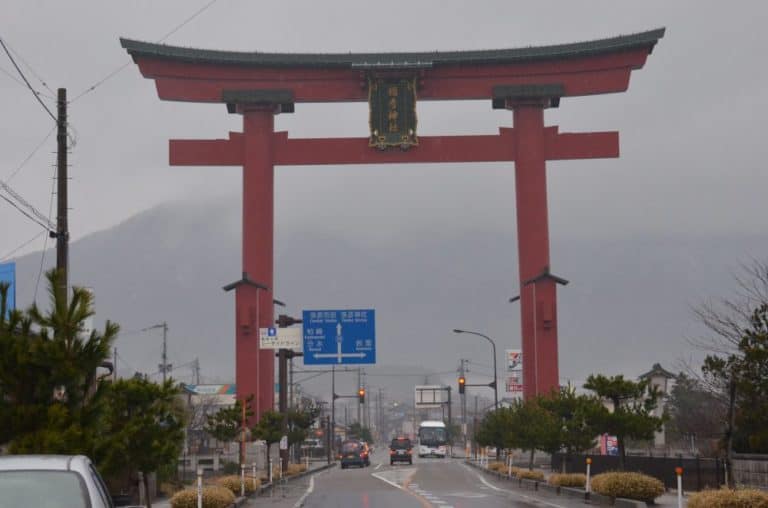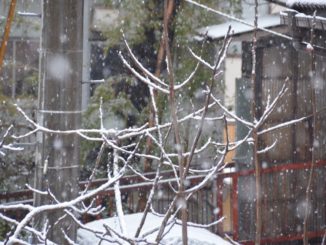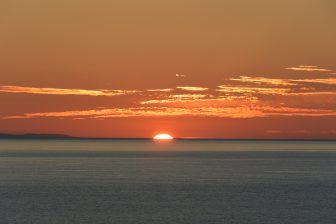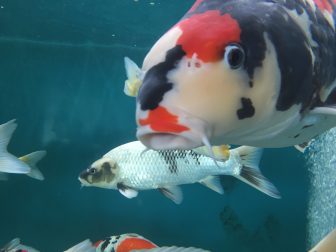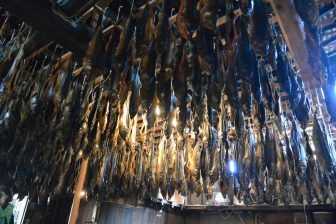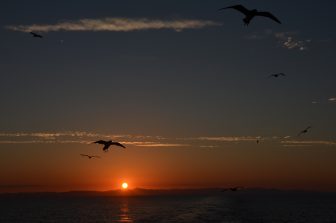Niigata
Region: Chubu
Capital: Niigata
Population: 2,271,611
Surface area: 12,584.18 Km2
Niigata stretches for 240 kilometres along the Sea of Japan so it is to the west of Tokyo.
It is part of the macroregion called Chubu (meaning the central region).
Divided into 6 areas, it also includes the island of Sado.
Much of its territory constitutes a part of the Natural Parks and it is well known for its heavy snowfalls, its koshihikari rice which is particularly special due to the waters in which it is grown being rich in mineral salts as a result of the melting mountain snows and for its sake which is also produced from this special rice.
Actually, the region is particularly famous for its heavy snowfalls which are a result of the freezing Siberian winds that gather up moisture from the Sea of Japan and then throw it back over the mountains of Niigata in the form of snow.
All of this contributes to making it the perfect spot in which to enjoy a range of winter sports.
Also in the prefecture of Niigata is the mouth of the longest river in Japan, the Shinano.
Thus, the city of Niigata is a water town, a coastal town that has been built between two rivers and in which, many streets were previously canals.
It is well known for its beautiful scenery, both along the coast and in the mountains, for its winter sports and for its beautiful hot springs (known as onsen in Japanese).
From an economic perspective, apart from agriculture, the electronics, manufacturing and metallurgical industries are well represented here. 90% of metal tools that are produced in Japan are manufactured here, in the prefecture of Niigata.
What to see in Niigata
In Niigata, the capital which gives its name to the region, it is really worth seeing the Hakusan jinja shrine which is dedicated to the deity of Mount Haku (in the prefecture of Ishikawa).
The shrine is in the Hakusan National Park, the first public park in Japan, which dates back to the Meiji period and is close to the Shinano river.
The historic building, formerly a building of the prefecture, which is quite close, is interesting because it is the only site of the prefectures from the Meiji period which is still standing in Japan.
The huge stadium known as “The Big Swan” hosted three matches during the World Cup that was held in Korea and Japan.
Between the 7th and the 9th of August, the very colourful Niigata Matsuri (festival) is held here.
The area around Mount Myoko is a very well-known ski resort and always one of the first places in Japan where it snows.
Naeba is a beautiful spot in the mountains with amazing views and is the location where the most important open-air rock festivals in Japan are held, such as the Fuji Rock Festival for example.
Yuzawa is another famous destination for those who wish to enjoy some winter sports and can be reached from Tokyo in about two hours.
The beautiful rural area of Echigo-Tsumari is the setting for a huge permanent exhibition (750 square kilometres) of works of modern art which is part of a project to revitalise the area which has suffered from a shrinking population combined with a large number of elderly residents. Every three years, there is also an exhibition of modern art in the same spot.
The island of Sado which is 32 kilometres from the coast plays an important role in the Japanese imagination when it comes to places of exile.
Historically, famous people such as the holy Buddhist Nichiren and one of the most eminent playwrights of the Noh theatre, Zeami Motokiyo, were exiled here.
During the Tokugawa period, gold mines were found on the island and these soon became an important source of income for the shogunate.
Nowadays, the biggest attraction is the “Celebration of Earth,” which is a taiko festival – these are the large Japanese drums and percussion instruments.
The history of Niigata
Inhabited since the Jomon period, the area of the capital, Niigata, was largely submerged under water in ancient times.
During the Asuka period, a fortress was built, but the actual port of Niigata only came into being in the 1500’s.
Initially, there were actually two ports: one on the Shinano river and the other on the Agano river but, when the two rivers merged and entered the sea at the same point, a single port was created and this became the largest and the most important.
However, due to flooding, the courses of the two rivers were eventually separated once again.
Niigata’s harbour was amongst the five ports that were opened up for commerce after the arrival of Commodore Perry, but, its shallow waters did delay its use by foreign vessels.
During the Japanese colonisation of Manchuria, it became a strategically important place for the smuggling of merchandise as well as people to the continent.
The city of Niigata suffered terrible damage as the result of a huge fire in 1955 as well as from a large earthquake in 1964.
People in the snowy country
[Dec.2012] In the morning of the day we left Niigata, the outside view was totally white. The rain yesterday turned into snow. From now on, they would have snow almost every day. The long snowy…
Ryokan with Sunset and Murakami Kibori Tsuishu
[ Sept.2018 ] We stayed at the seaside Ryokan (a Japanese style hotel) called ‘Taikanso Senami no Yu’ in Murakami in the Niigata Prefecture in Japan. According to the information on the internet, the hot spring…
Sushi, cruise and coloured carp in Niigata
[ Sept.2016 ] On the last day of our short trip to Sado and Niigata, Japan, we went out to have a sushi lunch. The restaurant we chose was called ‘Sekai Zushi’ and was taking…
Salmon in Murakami
[ Sept.2018 ] Murakami city in the Niigata prefecture in Japan is not huge, with a population of only about 60,000 people, but there are many famous products. One of them is salmon. We visited…
Ryokan with Sunset and Murakami Kibori Tsuishu
[ Sept.2018 ] We stayed at the seaside Ryokan (a Japanese style hotel) called ‘Taikanso Senami no Yu’ in Murakami in the Niigata Prefecture in Japan. According to the information on the internet, the hot spring…
back to Niigata Port by ferry
[ Aug.2016 ] After fully enjoying our holiday in Sado Island in Japan, we took a ferry back to Niigata City. There were more things we could have done in Sado, for example, we could…

